Vegetable and flower gardening can be a rewarding pastime. However, vegetables can thrive with only a few plants and good soil. In Kentucky, home gardeners can make a decent garden and, if possible, income, but only if they take the time to learn what works best for their plants.
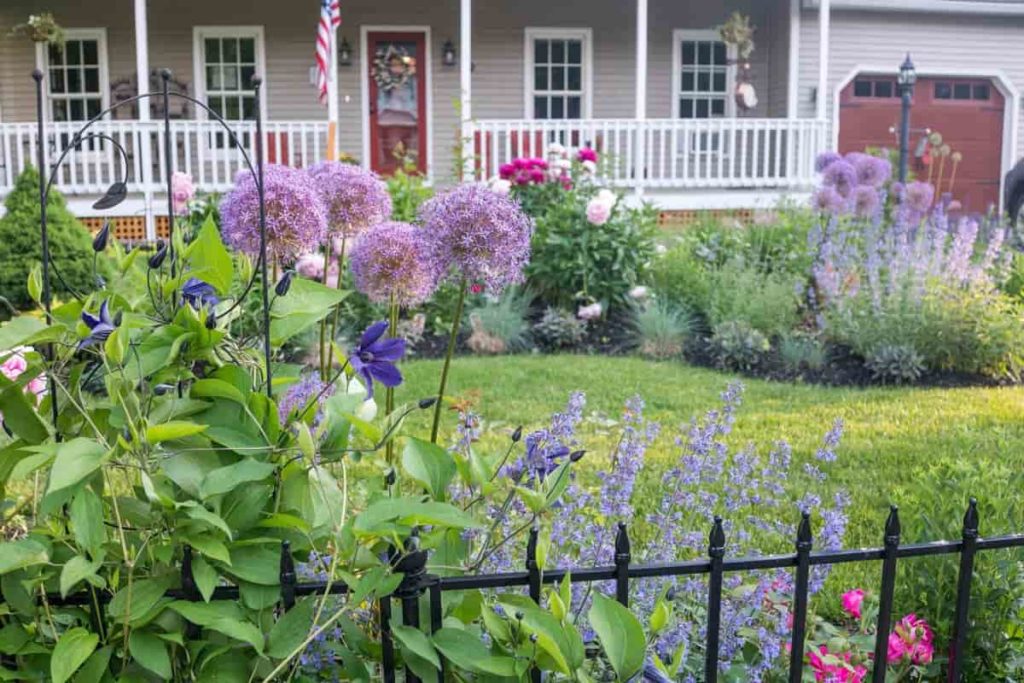
Below we learn about home gardening in Kentucky, the different types of home gardens for Kentucky, how to set up an indoor home garden in Kentucky, how to set up a backyard home garden in Kentucky, and how to set up a container home garden in Kentucky, about the planting/hardiness zones of Kentucky and different vegetables to grow in Kentucky home gardens.
How to start home gardening in Kentucky (KY) for beginners
When should you start planting a garden in Kentucky?
The calendar alone isn’t enough to tell you when you may start planting your vegetable garden in Kentucky. To determine when you should plant each crop, you must think about when you expect to harvest it, what you want to grow, and where you live in the state. In addition, educating yourself on the average last freeze date in the spring can help you avoid damaging your frost- and freeze-sensitive plants by putting them out too soon.
Of course, the date of the last freeze changes from year to year, but knowing the average date when frost is unlikely to occur might help you avoid damaging your plants by planting too soon. The final freeze often occurs earlier in western Kentucky, with April 8 as the median date for the last freeze in Paducah. The median final freeze in Lexington occurs on April 18. This is later in central Kentucky. There is a tendency for freezes to occur even later in western Kentucky, with May 4 being the median final freeze date in Ashland.
Once the soil is workable in the spring, you can plant cool-season crops. The soil shouldn’t be so saturated with water that it clumps when tilled or when you squeeze it in your hand. Early crops need ambient temperatures around 50 to 65 degrees Fahrenheit to germinate and grow before the introduction of warmer late spring and summer weather. Planting cool-season crops in Kentucky before the threat of spring frosts is a good idea since the cold weather does not damage them. Plants, including broccoli, cabbage, lettuce, and onions, are harvested during the cool months.
On average, the earliest you can grow cabbage and lettuce in western Kentucky is March 15; in central Kentucky, it’s March 25, and in eastern Kentucky, it’s April 1. For the best results, sow broccoli seeds no earlier than March 30 in the western part of the state, April 5 in the middle section, and April 10 in the eastern half. Onion sets may be planted as early as March 1 in the west, March 10 in central Kentucky, and March 15 in the east.
Planting warm-season crops in the spring is impossible until the threat of frost has gone. Tomatoes, cucumbers, peppers, and summer squash are all examples of warm-season crops. In western Kentucky, you can plant tomatoes as early as April 20; in central Kentucky, you have until May 5; and in eastern Kentucky, you have until May 15.
Cucumbers can be planted as early as April 20 in the state’s western regions, May 1 in the state’s central regions, and May 10 in the state’s eastern regions. The first of May is ideal for planting pepper seeds in the west, the tenth of May is ideal for central Kentucky, and the twentieth is ideal for the east. The western area may safely grow summer squash on April 20, the central region on May 10, and the eastern region on May 15.
Taking advantage of the late summer’s colder temperatures by planting cool-season crops twice will provide a harvest in the autumn. It’s essential to time your planting so that your seedlings avoid the warmest part of the summer but still have time to grow before the first harsh freezes. For example, cabbage should be planted in western Kentucky on July 1, in central Kentucky on July 15, and in eastern Kentucky on August 1. Lettuce should be planted in the west by August 1, in the center by August 15, and in the east by September 1.
In case you missed it: How to Start Home Gardening in Kansas (KS) for Beginners: From Scratch for Indoors, Outdoors, Backyards, and Containers
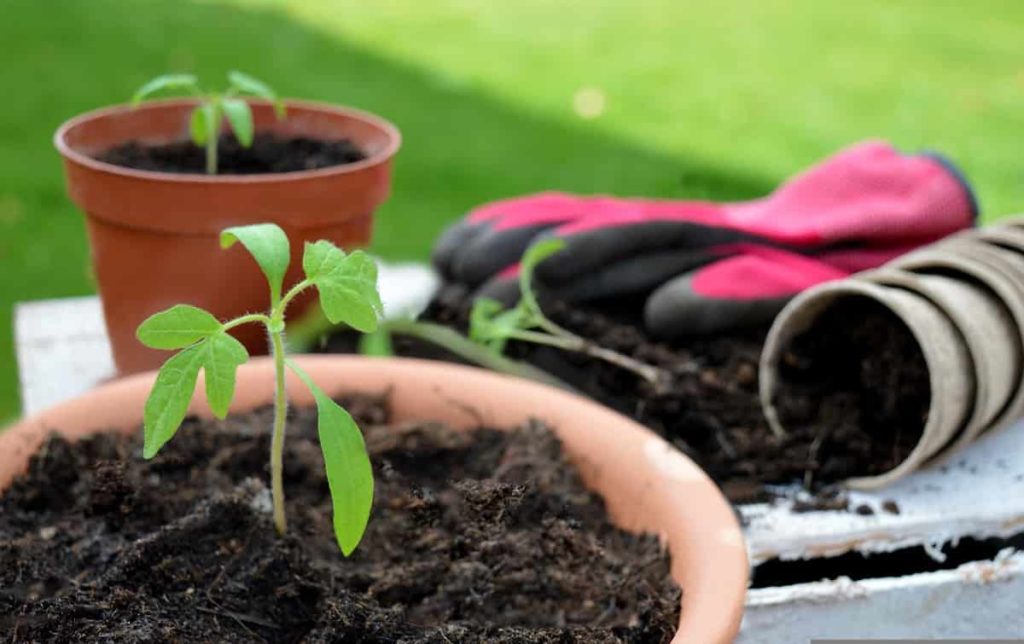
Is Kentucky suitable for gardening?
To have Crider soil, or the rich, well-drained soil found in Kentucky, is a blessing. Ideal for growing plants in one’s backyard. Grow heat-loving veggies beginning in May. Vegetables, including peppers, squash, sweet corn, and tomatoes, fall under this category. On the other hand, vegetables like turnips, beets, lettuce, and spinach may all be planted in August. A garden plan should be drawn out before any seeds are planted.
Simple is best. Plant your veggies in rows that are three feet apart. This facilitates tending to the plants without requiring undue effort. The weeds in your garden should also be managed. Remember that various vegetables and fruit plants have different planting windows when planning your garden. Growing your fruits and vegetables is a worthwhile endeavor. However, most folks in Kentucky think it’s challenging to get fresh, healthful produce.
What veggies can you grow in Kentucky?
Vegetables that can endure Kentucky’s harsh winters are your best bet for growing here. The following can be successfully planted even when the soil temperature is as low as 35 to 45 degrees Fahrenheit: Vegetables such as peas, radishes, spinach, and turnips are included. Other vegetables include beets, cauliflower, lettuce, cabbage, carrots, onions, parsley, parsnips, and peas.
Soil temperatures in Kentucky range from 50 to 75 degrees Fahrenheit, making it ideal for growing vegetables, including Swiss chard, beans, squash, tomatoes, peppers, cucumbers, pumpkins, eggplant, and okra. In addition, a large selection of fruit trees can be found in Kentucky. You can start your blueberry or strawberry patch in the spring. In the autumn, plant your raspberry and blackberry brambles. These plants are hardy enough to endure the cold winters of the state.
What can you plant in a winter garden in Kentucky?
Delicious early-season veggies can be grown during the winter to jumpstart your spring garden. An outline of winter planting and preparation is provided below. Prepare for next year’s garden in January. Determine your crop of choice: tomatoes, perhaps? Carrots? Kohlrabi? How many of each kind of plant should you grow to meet your needs? Create a planting strategy and timeline next. Do you intend on starting seeds inside or purchasing plants from a nursery? Make a plan, get some seeds, and daydream about eating delicious, homegrown produce.
Working conditions will improve in February. Peas, garlic bulbs, shallots, grapevines, and fruit trees/bushes can all be planted after the ground has thawed. In March, gardeners start putting in their first seeds. Direct-sowing broccoli, cauliflower, and spinach may be done in early March, along with planting fruit trees, shrubs, and grape vines.
Greens like lettuce, kale, cabbage, and arugula, as well as root vegetables like beets, turnips, and carrots, may be planted in the ground by mid-March. Asparagus, kohlrabi, parsnips, potatoes, leeks, mustard, onions, and Swiss chard are some more veggies that may be planted in March. Finally, tomato and pepper seeds should be started inside around the middle of March for planting outside in May.
What zone is Kentucky for planting?
Kentucky’s comparatively moderate and warm weather all year round, owing to its central position, makes Kentucky planting zones 6 and 7. The state experiences all four seasons in full force, with mild winters and torrid summers typical of the tropics. Humid subtropical describes the climate of much of the state. In contrast, the Appalachians strongly impact the oceanic climate found at the state’s highest elevations in the southeastern regions.
Extreme cold weather often doesn’t stick around for long in the state throughout the winter. Summertime highs rarely reach triple digits, while wintertime lows rarely dip below zero. The variation between Kentucky’s planting zones is minimal. Only the far southwestern part of the state lies in climate zone 7a, with the rest lying in zones 6a or 6b. Knowing what planting zone you’re in Kentucky is crucial so you can choose the correct plants, flowers, and veggies.
You can quickly and easily find out what planting zone you are in with the help of this interactive map. Each area of the world is divided into “growing zones” based on its typical climate and the dates of the first and final frosts. They tell gardeners what kinds of plants will thrive and what kinds won’t. The first step in creating a flourishing garden in Kentucky is selecting the appropriate plant varieties for the state’s climate.
In case you missed it: Home Gardening in Iowa: How to Start from Scratch for Indoors, Outdoors, Backyard, and Containers
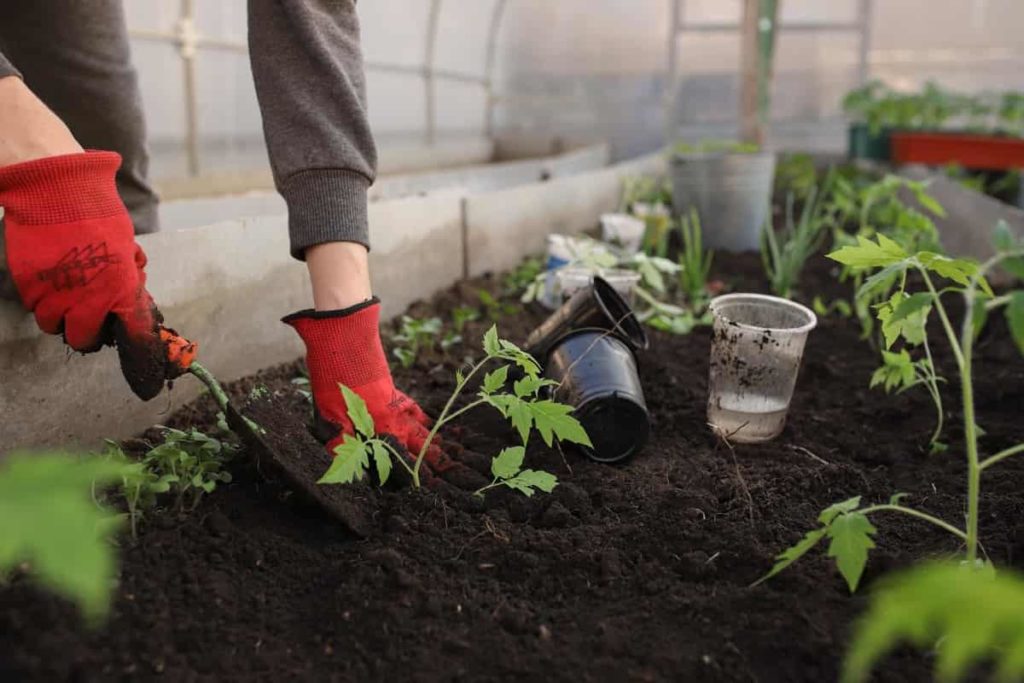
Remember that it’s OK to utilize plants from lower zones but not higher ones. If you plant anything that requires a warmer climate zone, it’s more likely to die during the winter. Many different kinds of plants and flowers can be found in Kentucky gardens. You can discover many luxuriant plants that will thrive, from begonias to salvia.
Other plants there do well include impatiens, marigolds, zinnias, angelonia (also known as summer snapdragon), cosmos, and the euphorbia diamond frost. These are some of my favorites among the many types of flowers that thrive there. Beans, carrots, broccoli, radishes, peas, sweet corn, squash, and tomatoes provide bountiful crops.
When can you plant tomatoes in Kentucky?
Freezing temperatures are fatal for tomato plants. Only plant once all chance of frost has passed in your location. Some people, eager to get their hands on fruit as soon as possible, plant much ahead of schedule and even cover their tender plants with blankets on frigid nights. Tomatoes should not be planted in central Kentucky before Derby Day or after Mother’s Day.
From then on, you can stagger your tomato plantings right up to June’s conclusion. Tomatoes can adapt to various environments, but plants do best in sandy, loamy soil with good drainage. Apply two to three pounds of a complete fertilizer per one hundred square feet of garden space after tilling or spading the soil by hand to loosen it. Lawn fertilizers that are rich in nitrogen should be avoided.
How do I start a backyard home garden in Kentucky?
Choosing the right location
When choosing where to plant your garden, remember the following four criteria. Before you start, think about how much light you’ll need. Vegetables typically take between six and eight hours to reach full maturity. More hours of sunlight equal a bountiful harvest. Do you like having the full sun in your yard, or would you rather have it in the mornings or evenings? Morning light will dry the dew on the leaves, making them less susceptible to disease.
To what far does the garden have to travel before it reaches the house’s water supply? Many plants wouldn’t survive if they couldn’t regulate how much water they took in. Also necessary is access to water that won’t freeze throughout the growing season. To avoid drying your garden, you shouldn’t keep the water source too far away.
Also, you need to think about how the air is moving. Fungi cause numerous leaf diseases. Airflow prevents fungal infection of plant leaves. Fresh air can’t get in when a structure or fence blocks the view. If you’re having trouble deciding where to sit, think about how near you want to be to the garden. The majority of people often disregard their backyard gardens. If you want to be motivated to take care of your garden, it has to be in a visible location.
Soil preparation for your backyard
Depending on where in Kentucky you are located, you will find a wide range of soil types. You can find dry and powdery sand, rocky and shallow, damp and peat-like sand, and sticky and gummy sand. How roots, water, and weeds interact varies greatly depending on soil type. Some of these elements inhibit plant development instead of fostering it. Sand holds less water than clay.
Soil should be damp enough to crumble underfoot but not so saturated that it becomes unworkable. Water and adequate drainage are ideal for soil. In contrast to soil, substrates dominated by rock or pebbles often lack some key nutrients that make the soil so productive. It can be tough to get high-quality soil, but that doesn’t mean you can’t grow plants without using potting soil.
Even the not-so-good soil can be made usable again. Adding organic matter can enhance the soil’s capacity to sustain plant development. The quality of the soil can also be increased, facilitating excavation. This strategy can mitigate the undesirable effects even while confronting challenging terrain. By breaking down clay and increasing sand’s capacity to hold water, organic matter enhances the development of plants in soil.
To improve soil quality, organic matter should be added. Composting yard waste is a simple process. Make a strong fertilizer by mixing nitrogen- and carbon-rich components found in soil, air, and water and then applying it to the ground before planting. Plant debris includes things like grass clippings, leaves, and straws. Make a mulch pile first.
This is because plant fragments added to the soil can take a very long time to decompose. You can still complete everything by spring if you start immediately. Put down some manure compost before you put in your seeds. Raw manure is discouraged by most professionals since it can harm plants and spread diseases. Go with manure compost instead.
Start planting the backyard garden
It is easier to maintain your garden weed-free if you plant your seeds in straight rows, which can be achieved by scraping the area before planting. Straight rows can be made by connecting small posts with twine. Follow the planting instructions on the seed packets before sowing. After the soil has been stirred fine over the seed, press softly with your palm down the row. Seeds can be sprayed directly instead of soaked.
In case you missed it: How to Grow Tomatoes from Seeds: Starting from Scratch, A Beginners Guide to Indoors, Outdoors, and in Pots
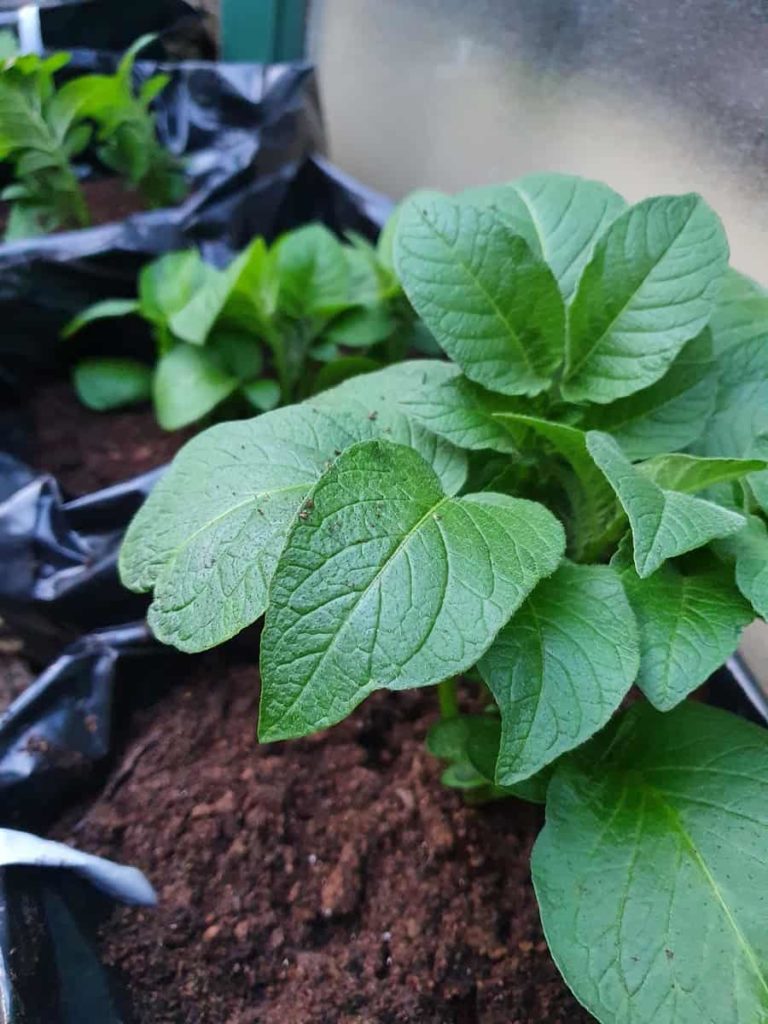
The rows should be spaced out by at least 30 cm, and bigger veggies will need more room. It’s easy to oversee a plot of land, so be sure to spread out your seeds. Growing huge plants instead of little ones requires more space. A plant’s size isn’t always proportional to its level of development. You need a strategy for how big you want your plants to become before you even sow the seeds.
A little seed can one day become a towering tree, or it can take years for its roots to reach the ground. Assume the role of a plant and consider what conditions might promote its optimal development. To find out how much room a plant needs, look at the seed packaging or go online. There is no one-size-fits-all guideline for the optimal amount of plants.
Some newbie gardeners may not realize their crops are too close together for years. Why? The eventual size of a plant is sometimes unpredictable and hard to anticipate. There may be too much space between each plant, in your opinion. Space, although given freely, nonetheless provides an opportunity for development. As plants mature and need more space, overcrowding may become a problem.
Be careful while watering your backyard garden
A decent rule of thumb is to water your lawn or garden once a week for an inch or two. Deep, infrequent watering is preferable to frequent, shallow watering. Before moving on to more complex issues, return to fundamental principles. A higher percentage of water is lost from sandy soils than from clay ones. If the clay component of soil is decreased, it will drain faster and retain moisture for a longer time.
Soil that can store water yet still drain quickly and readily is considered excellent. In addition to preserving soil moisture, mulch can reduce the water needed to keep grass alive throughout the summer. The amount of water that plants need varies with the weather. Plants need to be watered more often in hot, dry conditions. If it begins raining, you can stop watering the plants. Plant watering schedules are also determined. Plants retain a similar water need for growth as they did when first planted.
Until temperatures in Kentucky reach 85 degrees Fahrenheit, most vegetables, bedding plants, and flowers will need to be watered daily (29 C.). To stay alive and flourish, even in hot and dry circumstances, most pot plants need to be watered daily, and in some instances, many times each day. Similarly, you should time how frequently you water your plants with the times of day when they will get the most light.
Evaporation loss can be kept to a minimum by watering in the morning, but it’s still OK to water in the afternoon as long as the leaves don’t become drenched. With appropriate moisture, roots can develop and strengthen. You must water your garden twice weekly, giving it 5 cm and 2 in at each session. If you water your plants too infrequently without giving them a thorough soaking, you will speed up evaporation and slow the development of their roots.
Since so much water is evaporated, lawns are typically given overhead sprinklers. If you use a soaker hose or another drip watering system, you should give the plant’s roots a good rinsing. However, you should not get water on the plant’s leaves. Only plants in large containers should be watered automatically.
Control pests and diseases
More so than weeds, pests such as insects and animals can threaten the health of your garden. Burrowing herbivores like moles and gophers is common in many ecosystems. If you want to limit the number of bugs in your house to a minimum, scheduling frequent appointments with an exterminator is a good idea. In addition, aphids and other insect larvae might harm your plants if you don’t act promptly.
If the plants are contained inside a container, the pests can be removed manually. Daily trickle irrigation of your larger beds can deter pests. They won’t be able to harm your plants in this way. In addition, make sure that no plants in the garden show any indications of distress or diseases. A plant’s susceptibility to parasite infestation rises when it is under stress or has been harmed; the same is true for fungal infections. Infected plants must be discarded to avoid the propagation of a fungal disease. Pesticide spraying should be used as a last resort.
How do I start a container home garden in Kentucky?
Choosing the right containers
Choosing the right pot involves thinking about the plant’s eventual size, the pot’s material, and whether or not it can drain extra water. Growing healthy plants need a sufficiently large container. Pick a container large enough to hold the plant as it reaches maturity. All water must be allowed to exit the container to work properly. Soil that becomes waterlogged encourages the development of bacteria and fungi, which may reduce plant yield or even cause plant death.
Growers in dry locations, for instance, can choose containers with increased capacity for retaining water, while those in humid climates prefer containers with larger holes. That depends on the sort of weather you’re experiencing. Your plant’s overall well-being will determine how well its roots can spread. Twelve inches of soil is the minimum standard for vegetable cultivation. Tomatoes and squash need a 5-gallon pot, although lettuce and other shallow-rooted greens can be grown in a smaller container.
It can be difficult to move and store large containers on a balcony. However, more maintenance is required due to the increased rate at which smaller containers dry up during transit and adaption in hot weather. The container’s material of construction is of high importance. There is a wide variety of containers, each with its advantages and disadvantages. Some common types of containers include plastic, clay, and fabric.
In case you missed it: Growing Lettuce from Seed to Harvest: A Detailed Guide for Beginners
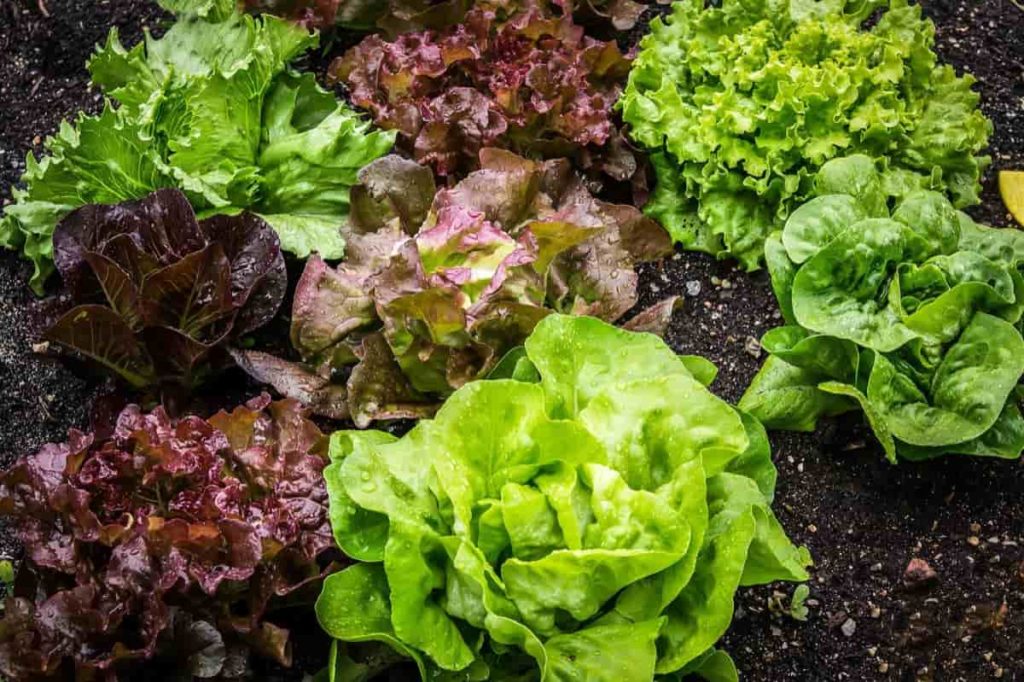
Choosing the ideal potting mix
Container planting medium can be bought or created, but choosing a good material is important. Soil that is too heavy and compacted will harm any plant it comes in contact with. Plant roots can’t get enough oxygen in soils that don’t drain properly. As a result, they are inappropriate. Weed seeds, diseases, and insects are just some of the many garden pests in the soil. The market currently has a variety of soil-free combinations.
Preliminary fertilizer is often added to these pesticide-free, pH-neutral mixes. Compost, perlite, coarse builder’s sand, vermiculite, pasteurized soil, and potting soil can all be used to create a gardener’s soil. Generally, purchasing a commercial soilless mix is more efficient, less time-consuming, and more precise. A custom soil mixture is a good option if you have specific requirements, such as those listed below.
Vermiculite and compost can be added to the soil in place of a scheduled watering system to help plants retain water. At most, one-third of the volume can consist of soil and sand. For plants that like arid conditions, such as lavender, rosemary, oregano, and thyme, you can choose to increase the soil’s porosity by adding perlite.
Selecting the plants for your containers
All the plants in a pot need to have their specific requirements satisfied for the pot to be considered healthy. Most plant species need 6 to 8 hours of sunshine daily to reach their full potential during the warmer months. When the weather grows too hot for full sun, several fruits and vegetables can still live in partial shade. Beets, kale, lettuce, carrots, and spinach are all cool-season crops that only need around 3 to 5 hours of sunlight each day to thrive in partial shade.
Greenery is at its peak from May through September. The majority of veggies thrive best when given steady, even watering. To avoid splashing, soil can be applied straight to the soil rather than the plant’s leaves. Vegetables with a high need for nutrients, such as cucumbers, squash, and tomatoes, require more fertilizer than those with lower demand.
If possible, keep the fruit out of direct sunlight, particularly during the hottest parts of the day. Several plant species can survive in low-light, nutrient-poor conditions. Some plants need constant moisture, while others if maintained in a container with adequate drainage, may survive for many weeks or months without any supplemental water.
Plant your container garden
Squeeze the plant pots to loosen the root balls before placing them in your garden. If you tug on the plant, it can be hurt. When planting, placing the plant’s root ball in the potting mix is best to protrude a few centimeters over the container’s rim. This facilitates the task of watering the plants. Carefully replace the potting soil in the empty places surrounding the plants, ensuring the plant stems don’t extend further than they did; using the soil around your plants can help keep them free of unwanted air pockets.
Water your container plants
Soil dries up more rapidly in containers than in traditional gardens or raised beds because of the increased exposure to sunlight and wind. On warm summer days, you may need to water your potted plants twice a week. You can use a hose, watering can, or drip watering to give your potted plants a good soaking. Pick the strategy that will work best in your little garden.
If you have plants in pots, you should water them first thing in the morning. You may be certain that your plants will have enough water to survive the hottest part of the day if you water them early in the morning. Spraying water on the soil with a hose won’t provide plants the moisture they need at their roots.
If you don’t want water to evaporate before it reaches the plant’s roots, give it a lengthy, deep soak every time you water it. To make your plant grow, water it till the pot leaks. When it comes to planting health, frequent light watering is worse than infrequent heavy watering. Your plants’ roots will grow shallow and weak if you overwater them, so you’ll need to reduce the frequency of your waterings.
Fertile your container garden
Nutrients in water are lost if it is pumped quickly through storage tanks. The procedure washes out soil’s helpful salts. Plants grown in containers have a greater nutrient deficiency and must be fed more often than those grown in the ground.
Use a slow-release fertilizer in potting soil at the beginning of the planting season. While the plant is actively developing, blossoming, and producing fruit, feed it twice monthly with a liquid fertilizer. There is no danger in testing your soil’s nutrient levels to see whether you need to add any. Using fish emulsion or compost, micronutrients can be added to the soil in a container.
Control pests and diseases in your container home garden
Plants kept in containers are safer from pests than those on open soil because they are more easily managed. They are, however, susceptible to pests, diseases, and other issues. Every breeze blows across a garden; it brings a new batch of pests and fungus spores. The health of a plant should be verified before purchasing. Before planting, give them a little wash. Use clean containers and potting soil that is free of dust. Cleaning tools are similar to washing one’s hands. More than half of the leaves have been eaten.
Therefore, you should probably remove the diseased plants. When watering, keep an eye out for pests. Keep an eye out for bugs and their eggs on the undersides of leaves. Identifying the nature of the problem is the first step toward resolving it. You can avoid wasting time and money by spraying the plant with several insecticides before determining which ones work best. Realize your limitations. Instead of trying to eradicate pests, we should focus on controlling them.
It’s not the end of the world if the leaf edges are chewed on, but it is something to consider. Pesticide use should be avoided whenever possible, but if necessary, the potential consequences for humans, animals, and the environment should be carefully considered. For example, if you have a chronic insect issue in your garden, such as spider mites, aphids, or whiteflies, your plants can be at risk of contracting a disease. You can get rid of these pests by using natural pest control techniques.
In case you missed it: Best Practices to Grow Amaranth from Seed to Harvest: A Complete Guide for Beginners
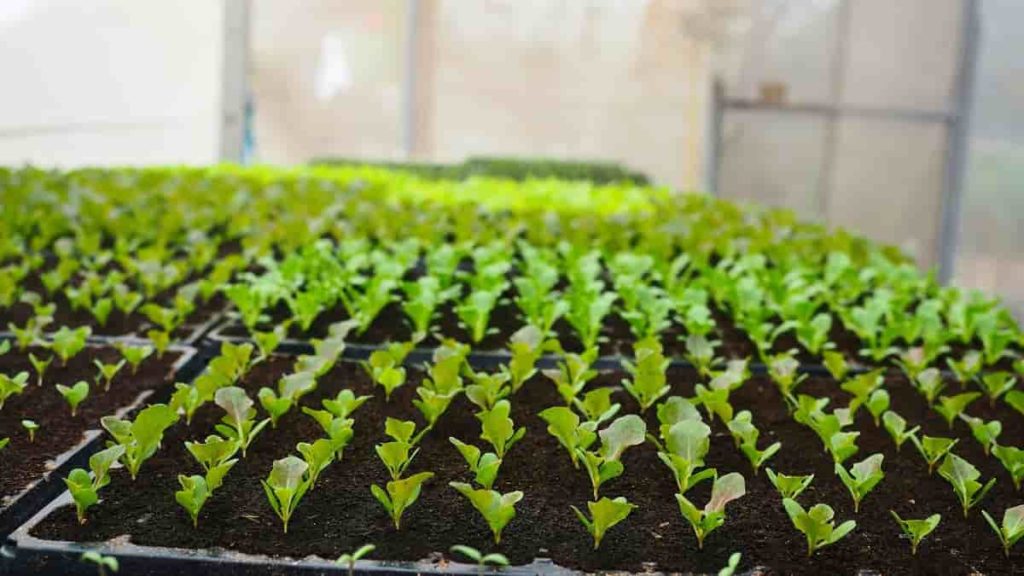
Should I line my raised garden bed with plastic?
Avoid using plastic as a liner for your garden since it prevents water from escaping and can kill your plants by submerging their roots. Putting up a barrier out of metal mesh, fabric, hardware cloth, and cardboard will simultaneously keep weeds and insects at bay.
What kind of soil should I put in my raised garden bed?
Pots and raised beds need to be placed on thinner soil than that found in a yard or garden. Potting mix, sometimes known as potting soil, is a more suitable alternative since it is less dense and airier than potting soil. Use this for holding containers. Using somewhat denser soil specifically designed for raised bed gardening is recommended for planting in raised beds.
How do I start an indoor garden in Kentucky?
Think about what plants you’d want to grow before you begin your indoor garden, and do some research to see which ones fare well in a controlled environment. Tomatoes like Red Robin, Tiny Tim, Toy Boy, and Florida Petite are ideal for greenhouse cultivation. As a result of their compact stature, they thrive in interior settings such as on windowsills. Before planting your seeds, find out whether a certain type could improve the outcome of your indoor crops.
Indoor gardening can be done as much or as little as you choose. Plan your garden so that the plants that need the greatest sunlight can access it. Examples of plants that thrive near a window include tomatoes, which need eight hours of daylight daily. However, mint prefers indirect light and would thrive if moved closer to the room’s center. If your window space is limited, try buying grow stands with lights.
Herbs and low-light plants thrive under fluorescent lighting, whereas higher-light trees and shrubs benefit more from compact fluorescent systems. One of the greatest advantages of indoor gardening is the ability to regulate the temperature at which plants grow. Cool-temperature plants require 50 to 70 F. Temperate plants thrive at 60 to 80 degrees Fahrenheit. This facilitates gardening throughout the year since the interior environment can be kept at a constant, pleasant temperature.
However, remember that in the winter, when days are shorter, plants that demand much sunshine will need artificial light. In addition, a humidifier may be required since dry indoor air is common throughout the winter. Your indoor humidity level is probably too low if you see browning at the leaf tips, wilted foliage, or leaf drop.
Plants grown in the house might flourish in the correct container and soil. However, weed seeds and insects might be present in outdoor soil, making it unsuitable for gardening. You could instead search for potting soil that says it is suitable for indoor use. Ideally, the soil used for indoor planting would be light and easily drained.
One option is to use a pot with holes drilled on the bottom and a collect basin below. Keep the plant’s eventual size in mind when deciding on a pot. A good rule of thumb is to use a pot that’s two gallons for every 12 inches of estimated plant height. When planting seedlings inside in the early spring, seedling trays are ideal. That way, you may get many plants going in a short space and then move them all at once after 4 to 6 weeks.
How can I grow plants indoors without sunlight?
The safety of using LED lights to cultivate plants inside is unmatched, and the method is easily adaptable to new circumstances. In addition, unlike fluorescent and HPS lamps, they don’t waste energy and can have their color temperature altered with ease.
How many times a week should I water my indoor plants?
Most houseplants must be fed every 10-14 days throughout the growing season (spring and summer). During the fall and winter, your houseplants only need half as much food as they usually would, so you may skip feeding them altogether.
Conclusion
Finally, keep thorough records of your work in your home garden, as this information will be invaluable next spring. Keeping a journal or notebook detailing your gardening successes and failures is an excellent method to improve your gardening skills. If you live in the following cities/towns/counties of Kentucky (KY) in the United States of America, this article might be helpful with the basics of setting up a home garden indoors, outdoors in backyards, and in containers.
| Louisville | Campbellsville |
| Lexington | La Grange |
| Frankfort | Harrodsburg |
| Bowling Green | Prestonsburg |
| Paducah | Middlesboro |
| Owensboro | Radcliff |
| Somerset | Erlanger |
| Henderson | Russellville |
| Elizabethtown | Whitesburg |
| London | Leitchfield |
| Hopkinsville | Paintsville |
| Murray | Cynthiana |
| Glasgow | Barbourville |
| Pikeville | Russell Springs |
| Covington | Dry Ridge |
| Mayfield | Horse Cave |
| Bardstown | Fort Thomas |
| Danville | Flemingsburg |
| Nicholasville | Jeffersontown |
| Madisonville | Fort Mitchell |
| Berea | Southern Kentucky |
| Morehead | Western Kentucky |
| Maysville | Central Kentucky |
| Mount Sterling | Eastern Kentucky |
| Shepherdsville | North Kentucky |
- Flower Garden Designs and Layouts for Beginners
- Planting and Spacing Techniques in Papaya: A Beginner’s Guide
- Growing Gold: Essential Techniques for Planting Pineapples
- How to Make Kalanchoe Plant Bushy: Home Remedies and Solutions
- 11 Reasons Why Your Gardenia is Not Blooming: Home Remedies and Solutions
- Eco Elegance: The Guide to Designing a Drought-Tolerant Landscape
- Gardening on a Slope: Strategies for Hillside Landscaping
- Nourish and Flourish: Top Organic Mulches for Thriving House Plants
- Everything You Want to Know about Indian Mogra Flower: Discover Uses and Growing
- Green Thumb Success: Expert Tips for Cultivating Greenhouse Pumpkins All Year Round
- Maximize Growth & Flavor: The Ultimate Guide to Companion Planting in Herb Gardens
- How to Control Rhododendron Problems Naturally: Home Remedies and Organic Ways to Fix Them
- Natural Magic: The Remarkable Benefits of Cinnamon for Plants
- Best Steps to Revive Dying Tulip with Natural and Organic Treatment
- 10 Reasons Why Your Angel Trumpet is Not Blooming: Remedies and Treatment
- How to Fix Periwinkle Leaf and Flower-Related Problems: Natural Remedies and Solutions
- How to Fix Zinnias Leaf and Flower Problems: Discover Natural and Home Remedies
- Organic Steps to Induce Lemon Tree Flowers: A Comprehensive Guide
- Bloom Booster: Crafting the Perfect Homemade Bougainvillea Fertilizer
- Optimizing Growth: A Guide to Applying NPK Fertilizer for Potted Plants
- 10 Best Homemade Fertilizers for Rubber Plant: DIY Recipes and Application Method
- How to Boost Female Pumpkin Flowers: Effective Steps for More Flowers and High Yields
- Transform Your Indoor Garden: Top Benefits of Pink Salt for Houseplants
- 10 Best Homemade Fertilizers for Peacock Plants (Calathea): Easy DIY Guide
- Unlock Blooms: 9 Reasons Why Your Potted Chrysanthemum is Not Blooming
- 8 Reasons Why Your Potted Hibiscus is Not Blooming: Fix it with Simple Solutions
- Unlock Blooms: 9 Key Reasons Your Potted Frangipani Won’t Flower
- 10 Reasons Why Is My Ice Plant Not Blooming: Remedies and Treatment
- 10 Reasons Why My Potted Hydrangea Not Blooming: Treatment and Remedies
- 10 Reasons Why is My Wisteria Not Blooming: Remedies and Treatment
- 10 Reasons Why is My Goldfish Plant Not Blooming: Remedies and Treatment
- Maximize Your Space: Ultimate Guide to Balcony Gardening with Grow Bags
- 10 Reasons Why Your Iris is Not Blooming: Remedies and Treatment
- 10 Reasons Why Your Anthurium Plant is Not Blooming: Treatment and Remedies
- 10 Reasons Why Your Aquaponic Plants Are Not Flowering: Remedies and Treatment
- 10 Reasons Why Your Agapanthus is Not Flowering: Remedies and Treatment